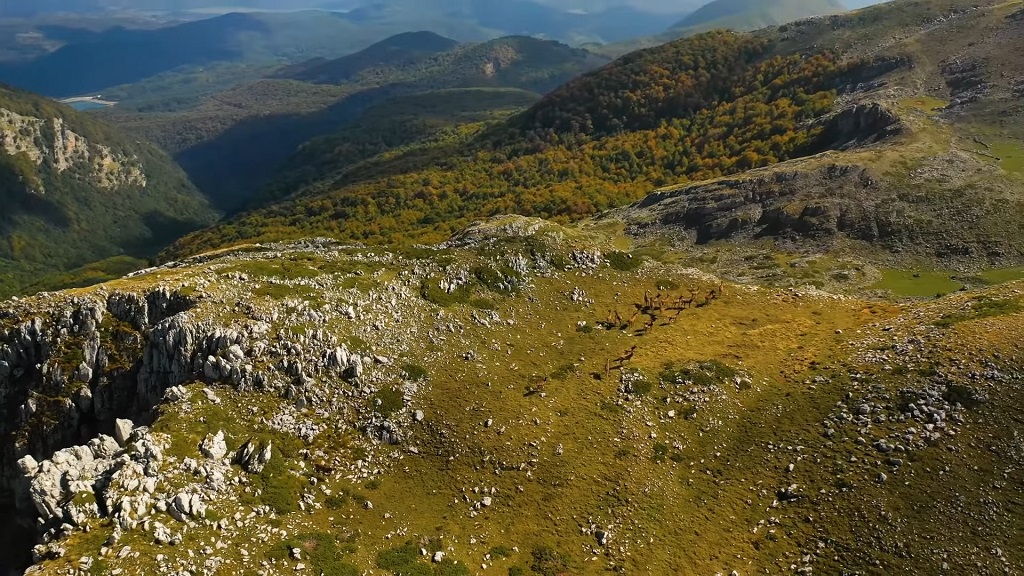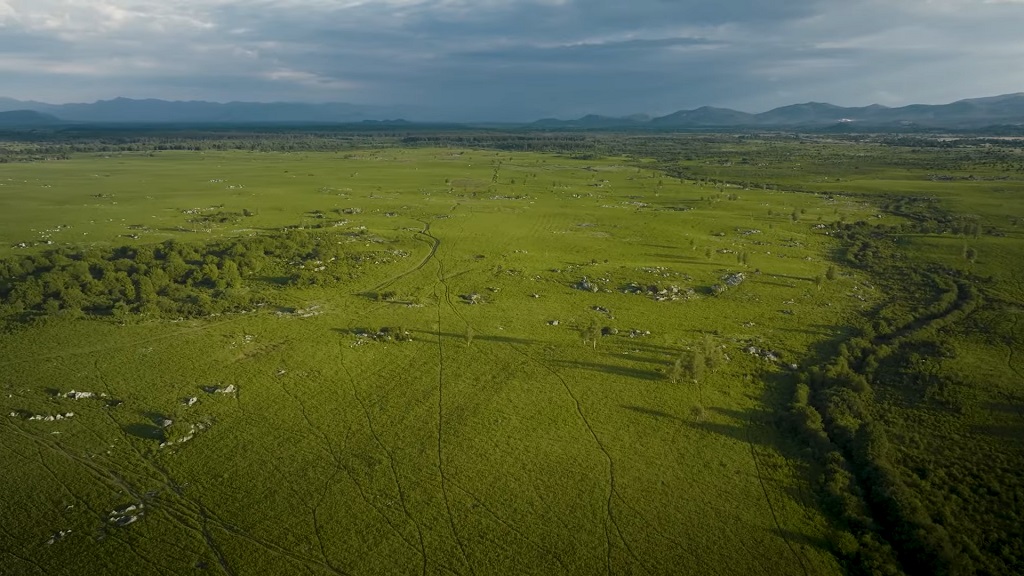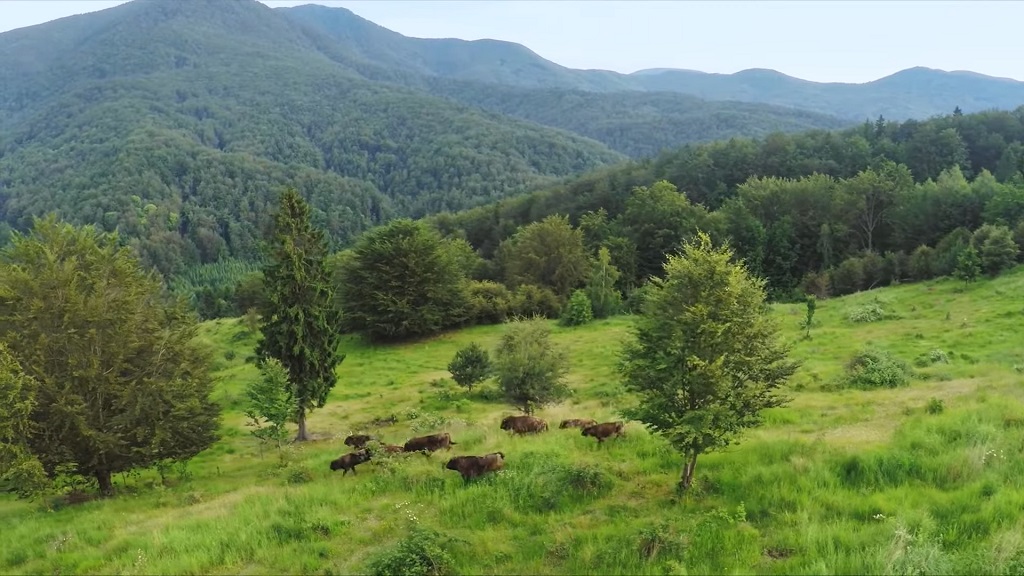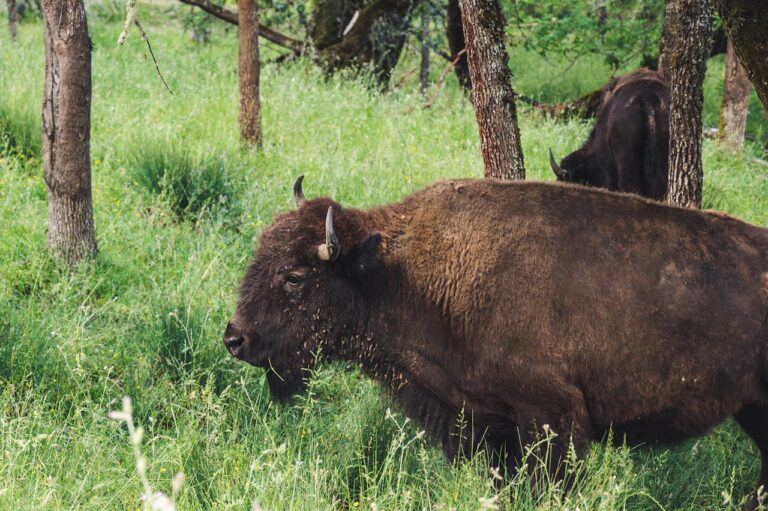Rewilding is a science-based approach to ecological restoration that reintroduces native species, restores natural processes, and reduces human control over land management to rebuild self-sustaining ecosystems.
In Europe today, rewilding is not a fringe conservation idea – it is a necessary response to three interlinked crises: biodiversity collapse, climate change, and rural land abandonment.
According to the European Environment Agency (EEA), over 81% of protected habitats in the EU are in poor condition as of 2020, while over 60% of monitored species are declining.
Meanwhile, between 1960 and 2020, Europe lost nearly 50% of its large mammals and bird populations, primarily due to habitat fragmentation, agricultural intensification, and urban sprawl.
At the same time, rural depopulation has left over 30 million hectares of agricultural land abandoned since 1960, especially in countries like Spain, Romania, and Bulgaria.
This vast underutilized landmass creates an opportunity for large-scale ecological recovery.
Moreover, rewilding aligns with EU policy objectives. Under the EU Biodiversity Strategy for 2030, the European Commission has committed to restoring at least 20% of the EU’s degraded ecosystems by 2030.
Rewilding projects contribute directly to these goals while also supporting rural economies through eco-tourism and nature-based livelihoods.
Land Use Pressures and the Emerging Opportunity for Rewilding

Europe’s land-use patterns have shifted dramatically over the past six decades, driven by the mechanization of agriculture, rural depopulation, and economic centralization in cities.
As traditional farming became less viable in mountainous and semi-arid zones, millions of hectares were gradually abandoned.
According to the European Environment Agency (EEA), nearly 29 million hectares of farmland across the continent have been abandoned since 1960, much of it in countries like Spain, Portugal, Romania, Bulgaria, and the Baltic states.
These areas now represent the geographic core of potential rewilding landscapes.
This trend correlates strongly with rural demographic decline. Between 2000 and 2022, rural areas in the EU saw an average population decrease of 8%, based on Eurostat data from 2023.
The withdrawal of people from marginal farmland reduces the intensity of human disturbance, creating a social and spatial opening for natural processes to re-establish. Yet despite this retreat, the environmental health of Europe’s landscapes remains dire.

The EEA’s State of Nature Report (2020) confirmed that 81% of EU-protected habitats remain in poor or bad ecological condition. Farmland birds, an indicator group for biodiversity in cultural landscapes, have declined by 34% since 1990, according to BirdLife International.
Together, these factors illustrate both the necessity and feasibility of rewilding in Europe. The continent is witnessing a rare combination of ecological degradation, land abandonment, and political readiness for restoration.
These underutilized lands, if managed wisely, offer Europe a once-in-a-generation chance to reverse biodiversity loss and reintegrate functioning ecosystems at scale.
Land Use Dynamics Supporting Rewilding in Europe
| Factor | Data/Trend | Source |
| Abandoned farmland | ~29 million hectares since 1960 | EEA, 2022 |
| Average EU rural population change | -8% (2000–2022) | Eurostat, 2023 |
| Protected habitat condition | 81% in poor or bad condition | EEA State of Nature Report, 2020 |
| Farmland bird population | Down 34% since 1990 | BirdLife International, 2021 |
Keystone Species and Their Role in Restoring Ecological Function
Rewilding is not simply about removing human influence; it also requires the deliberate reintroduction of species that once maintained ecosystem structure and resilience.
These are often referred to as keystone or engineer species – animals that create, modify, or stabilize critical ecological conditions.
In Europe, centuries of hunting, deforestation, and persecution eliminated many of these animals, such as apex predators and large herbivores. Their absence led to overgrazing, homogenized landscapes, disrupted food chains, and declining biodiversity.
The return of these species is central to rewilding’s ecological strategy. For instance, the European bison – once extinct in the wild – is being reintroduced in the Carpathians and Poland, where its forest-grazing habits help open up canopy structure and support species diversity.

The Eurasian lynx, reintroduced in parts of the Alps and Bohemia, plays a key role in controlling deer overpopulation, thus allowing forest regeneration.
Similarly, the Eurasian beaver – an ecosystem engineer – transforms degraded waterways into biodiverse wetlands through dam-building and water retention. These restored wetland systems benefit not only biodiversity but also flood mitigation and carbon sequestration.
Other species, like Griffon vultures, are vital for carcass removal and nutrient cycling, especially in rewilded mountain systems such as the Rhodopes or the Velebit range.
Meanwhile, Konik horses and other wild grazers contribute to maintaining grassland habitats that would otherwise turn into scrub, helping to preserve open mosaics favored by a wide range of flora and fauna.
Each of these animals acts not in isolation but as part of a functional ecological network. Their return helps reactivate lost interactions and feedback loops, making ecosystems more resilient and self-regulating over time.
Keystone Rewilding Species in Europe

| Species | Ecological Role | Rewilding Sites |
| European bison | Forest opening, seed dispersal | Southern Carpathians (Romania), Białowieża Forest (Poland) |
| Eurasian lynx | Predator of deer, forest regeneration enabler | Jura Mountains, Bohemia, Alps |
| Eurasian beaver | Wetland creation, hydrology regulation | Germany, Scotland, Netherlands |
| Griffon vulture | Scavenging, nutrient cycling | Rhodope Mountains (Bulgaria), Southern France, Balkans |
| Konik horse | Open habitat maintenance through grazing | Oostvaardersplassen (Netherlands), Sierra de Andújar (Spain) |
Rewilding Projects in Action: Large-Scale Initiatives on the Ground
View this post on Instagram
The application of rewilding in Europe is not theoretical. Since 2011, the continent has seen a steady expansion of coordinated field-level rewilding initiatives, most prominently under the umbrella of the non-profit organization Rewilding Europe.
This initiative operates across multiple biogeographic zones and aims to demonstrate that large-scale rewilding can restore ecological integrity while creating economic value for rural communities.
As of 2024, the organization supports active rewilding in over 1 million hectares of land across eight key landscapes, with additional corridors and buffer zones under development.
Each project site is tailored to the local ecological conditions and socio-political context.
In Western Iberia, for instance, efforts have focused on natural grazing systems using wild horses and ancient cattle breeds to reduce fire risk and maintain open ecosystems in regions long affected by rural abandonment.
In the Southern Carpathians of Romania, the reintroduction of European bison is the flagship effort, with over 200 animals reintroduced since 2014, rebuilding a keystone grazer population that shapes forest structure and seed dispersal.
The Velebit Mountains in Croatia have focused on stabilizing populations of large carnivores, such as wolves, lynx, and bears, re-establishing top-down control in trophic chains.
Selected Rewilding Europe Initiatives
| Location | Main Ecological Focus | Key Outcomes |
| Western Iberia (PT/ES) | Natural grazing, wildfire resilience | Reintroduction of wild horses and cattle, scrub control |
| Southern Carpathians (RO) | European bison reintroduction | 200+ bison rewilded since 2014 |
| Velebit Mountains (HR) | Carnivore recovery | Bear and lynx populations stabilized |
| Rhodope Mountains (BG) | Vulture conservation | The Griffon vulture population doubled |
| Oder Delta (DE/PL) | Wetland hydrology, eco-tourism | Post-COVID tourism growth, waterfowl return |
These cases demonstrate that rewilding is not confined to protected areas – it operates on dynamic, multifunctional landscapes and actively integrates ecological goals with socio-economic planning.
Environmental Impact: Carbon, Water, and Biodiversity
One of the most compelling arguments for rewilding is its measurable contribution to environmental stability and ecosystem service recovery.
This is especially important in the context of climate adaptation, flood control, carbon sequestration, and biodiversity protection – all of which are under severe stress across the European Union.
Rewilded peatlands, forests, and wetland mosaics are effective carbon sinks. For example, restored peatlands can sequester between 300 and 450 tons of CO₂ per hectare, making them one of the most efficient land-based carbon storage systems.
Old-growth forests, while slower to regenerate, provide long-term carbon security and habitat for forest-dependent species. Rewilded grasslands and riparian zones – especially those engineered by beavers – also contribute significantly to carbon capture, with storage potentials ranging from 40 to 120 tons per hectare, depending on vegetation maturity and water availability.
In recent years, the environmental benefits of rewilding projects have become more visible and verifiable through advanced monitoring techniques, including the use of real-time satellite images of the Earth.
These technologies allow scientists and policymakers to observe landscape change, track vegetation regrowth, measure wetland expansion, and even detect subtle shifts in surface temperatures.
The use of satellite-based remote sensing has been critical in documenting the climate impact of rewilding areas, particularly in regions undergoing rapid restoration.
Carbon Sequestration Potential by Habitat Type
| Habitat Type | CO₂ Storage (tons/hectare) | Rewilding Potential |
| Natural peatlands | 300–450 | Very high |
| Old-growth forest | 180–250 | High |
| Rewilded riparian systems | 90–120 | Medium–High |
| Grasslands (rewilded) | 40–80 | High |
| Degraded farmland | <10 | Target for conversion |
Socioeconomic Value of Rewilding: Beyond Nature

While rewilding is rooted in ecology, its relevance to human livelihoods is increasingly recognized. In economically marginal regions, rewilding serves as an anchor for nature-based economies, offering new employment paths, tourism revenue, and land-use diversification.
The Western Iberia rewilding area is a case in point, where eco-tourism and wildlife guiding now generate over €1.2 million annually, creating direct jobs and sustaining local accommodation and food businesses.
This is critical in areas where traditional farming has declined and depopulation threatens community viability.
Employment generated by rewilding is not only seasonal. In Romania’s Carpathians, long-term ranger positions, biodiversity monitoring jobs, and community conservation roles have been established as core components of local economies.
In parallel, cultural revival has occurred where charismatic species like wolves, bears, or bison return, offering symbolic value that reconnects communities with their natural heritage.
Artisanal products such as wild meat, rewilded honey, and forage-based goods are also beginning to emerge, giving rise to boutique branding tied to ecological values.
According to a 2022 report by NatureScot, every €1 invested in rewilding returns an estimated €3–4 in local economic value, through a combination of tourism, ecosystem services, and employment.
This is a more resilient and diversified model than traditional monocultures or extractive industries, especially as the Common Agricultural Policy (CAP) shifts toward payments for ecosystem services rather than volume-based subsidies.
Conclusion
Rewilding represents one of the most ambitious and scientifically grounded land-use transformations currently underway in Europe. It is not an experimental or fringe approach, but a direct response to systemic failures in environmental policy, rural development, and biodiversity conservation.
With more than 80% of EU-protected habitats in poor condition and tens of millions of hectares of agricultural land now abandoned or underutilized, the ecological and spatial case for rewilding is undeniable. It offers a rare convergence of environmental necessity and socio-political feasibility.
The data is clear: rewilded systems store more carbon, support more biodiversity, and regulate water and soil functions more effectively than degraded or industrially managed landscapes.
Furthermore, the return of keystone species such as bison, lynx, beavers, and vultures has not only an ecological impact but also cultural significance – restoring processes that were suppressed for centuries and rebuilding public connection with wild nature.

